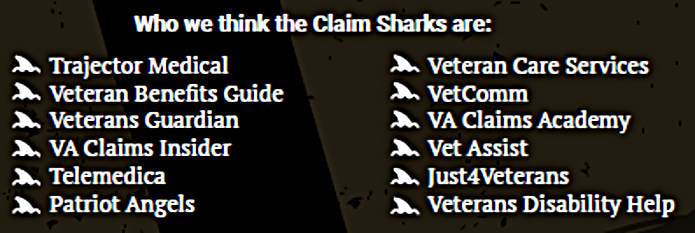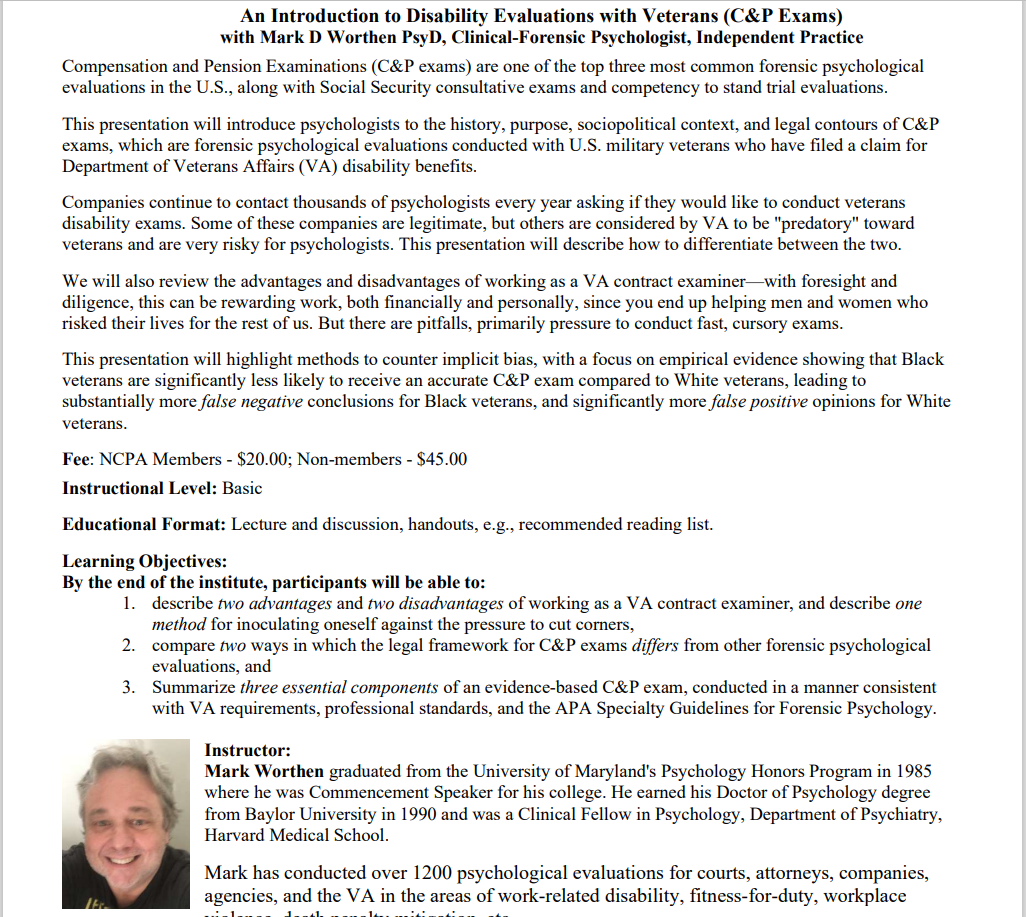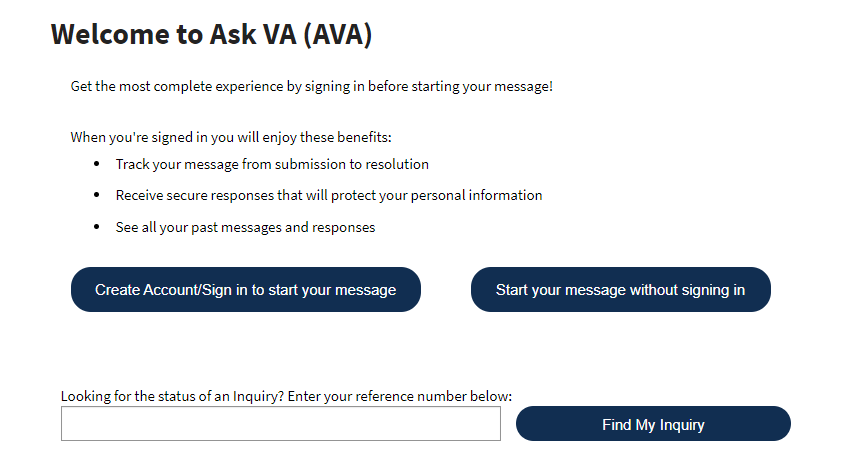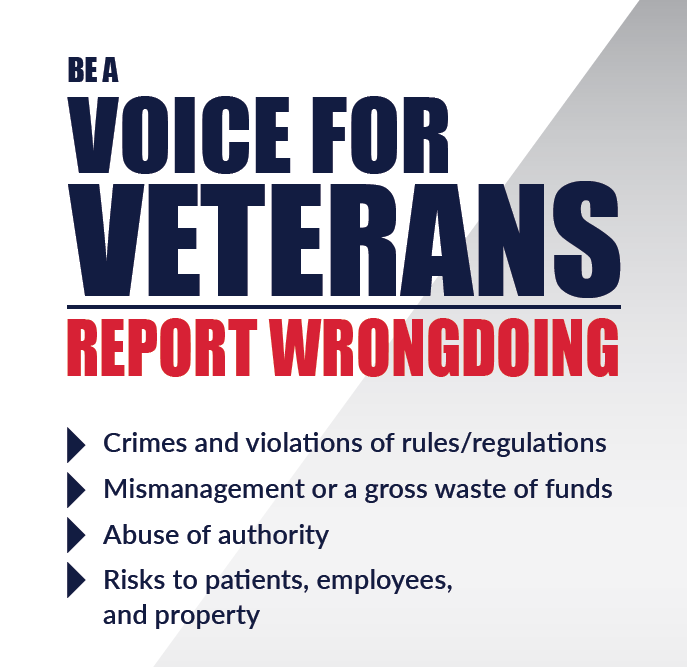- Home
- Stay Current
- C&P Exam News
Compensation and Pension Exam News
July 8, 2024 – Compensation and pension exam news: The latest reports, announcements, proposed regulation changes, tools, tips, upcoming court cases, etc., related to psychological C&P exams.
On this page ...
- VA Amps Up Fraud Prevention Efforts
» Who Are the Claim Shark Companies?
» VA Exams Have Problems Too. But They're Not Predatory. - 1-Hour Workshop: Introduction to Disability Evaluations with Veterans (C&P Exams)
- Principles of Reviewing and Weighing Medical Evidence, Psychometric Auto-Scorer, PTSD Assessment FAQ
» Self-Report, Credibility, & Medical Evidence
» Free Programmed Excel Spreadsheet Automatically Scores 28 Psychological Questionnaires
» Workshop: PTSD Assessment Frequently Asked Questions
» Recommended Reading for C&P Psychologists
» Psychological Insights for Veterans Law Attorneys
- Supreme Court Grants Certiorari re: Veterans Court Application of Benefit-of-the-Doubt Rule - Bufkin v. McDonough
» Question Presented
» writ, n.
» Petition for Certiorari
» Supreme Court Certiorari Process
» Footnotes
- "... Who Has Previously Submitted a Statement on the Claimant’s Behalf" (M21-1 Manual: Accepting a Fee-Based Examiner’s Report)
» My Inquiry to Ask VA (what exactly does that phrase mean?)
» Ask VA's Response
» Conclusion (it is a superfluous phrase)
» Footnote
- Poor Quality Contractor Exams: Senator Warren Demands Answers
» Senator Warren Asks How VA Measures C&P Exam Quality
» VA Secretary's Response
PTSDexams.net is an educational site with no advertising and no affiliate links. Dr. Worthen conducts Independent Psychological Exams (IPE) with veterans, but that information is on his professional practice website.
Compensation and Pension Exam News: VA Amps Up Fraud Prevention Efforts
The Department of Veterans Affairs (VA) is warning veterans more often and with greater clarity than ever before about a pernicious problem: claim sharks.
And for good reason. Particularly since VA privatized C&P exams, groups offering to help veterans file claims for a fee have proliferated.
Some of these groups provide legitimate services, e.g., expert information about complex issues and strategies to address vexing problems.
And there are sole practitioners like me (Dr. Worthen), as well as small groups of experienced medical and psychological experts, who conduct independent medical or psychological exams. But we do not file claims for veterans, write puffed up reports, conduct half-ass exams, or make wild promises. And we strongly recommend that veterans work with a veterans service officer.
But many outfits "promise the moon" to the point of practically guaranteeing a high service-connected disability rating.
These firms have "special relationships" with "medical experts" who will "complete a DBQ guaranteed to get you the maximum benefits you have earned!" (I'm paraphrasing from advertisements I've seen—you've probably seen them too.)
At least in the psychology realm, rather than recruiting genuine experts, the predatory companies recruit naïve or unscrupulous psychologists to complete a DBQ based on skimpy records and a 30-minute video chat.
Of course, some VA psychologist-examiners don't do much more than that, but that's a separate concern (see below).
VA updated their Fraud Prevention web page on 29 July 2024. For the information most relevant to C&P exams, scroll down to the Disability Benefits Questionnaires (DBQ) Fraud section.
Here are some excerpts from the Veterans Fraud Prevention page:
What is an example of a DBQ scam?
VA wants Veterans to be aware of individuals and companies marketing the service of completing DBQs. Unfortunately, there has been an increase in instances where individuals and companies are engaging in questionable and fraudulent practices, including charging high prices for completing DBQs and completing DBQs remotely with falsified information.
What steps can you take to protect yourself?
Before attending an examination and/or having a medical professional complete a DBQ, VA encourages Veterans to become familiar with the guidance below:
- Veterans Health Administration (VHA) and VA Contract Examiners are trained in how to conduct C&P disability examinations and there are no costs or hidden fees involved.
- A VA Claims Processor determines whether a compensation & pension (C&P) exam is needed. If needed, the Claims Processor will identify if the C&P exam will be performed by a VHA Examiner or Contract Examiner.
Who Are the Claim Shark Companies?
The VFW compiled a list:
VA Exams Have Problems Too. But They're Not Predatory.
I wrote above that some VA psychologist-examiners don't do much more than a cursory exam too.
But at least they have MDE (medical disability examination) companies looking over their shoulder, and those psychologists have completed the VA-required training (8.5 hours of online video courses).
And most contract examiners try their best to conduct a decent exam, albeit they cannot conduct the type of comprehensive, evidence-based psychological evaluation expected in almost all other medicolegal contexts.
They receive low levels of reimbursement making a genuine forensic psychological evaluation economically unfeasible.
Plus, VA values productivity over quality by a wide margin. Of course, this is not really compensation and pension exam news for most of you—the problem has persisted for many years.
1-Hour Workshop: Introduction to Disability Evaluations with Veterans (C&P Exams)
This workshop was in July 2024, but I will be presenting similar workshops for psychologists in the future. Subscribe to the PTSDexams Newsletter to receive notice of my next webinar.
An Introduction to Disability Evaluations with Veterans (C&P Exams) with Mark D Worthen PsyD, Clinical-Forensic Psychologist.
18 July 2024 @ 12:00 noon – 1:00 PM Eastern Time
Compensation and Pension Examinations (C&P exams) are one of the top three most common forensic psychological evaluations in the U.S., along with Social Security consultative exams and competency to stand trial evaluations.
This presentation will introduce psychologists to the history, purpose, sociopolitical context, and legal contours of C&P exams, which are forensic psychological evaluations conducted with U.S. military veterans who have filed a claim for Department of Veterans Affairs (VA) disability benefits.
Companies continue to contact thousands of psychologists every year asking if they would like to conduct veterans disability exams.
Some of these companies are legitimate, but others are considered by VA to be "predatory" toward veterans and are very risky for psychologists. This presentation will describe how to differentiate between the two.
We will also review the advantages and disadvantages of working as a VA contract examiner—with foresight and diligence, this can be rewarding work, both financially and personally, since you end up helping men and women who risked their lives for the rest of us.
But there are pitfalls, primarily pressure to conduct fast, cursory exams.
This presentation will highlight methods to counter implicit bias, with a focus on empirical evidence showing that Black veterans are significantly less likely to receive an accurate C&P exam compared to White veterans, leading to substantially more false negative conclusions for Black veterans, and significantly more false positive opinions for White veterans.
Learning Objectives: By the end of the institute, workshop will be able to:
1. Describe two advantages and two disadvantages of working as a VA contract examiner, and describe one method for inoculating oneself against the pressure to cut corners.
2. Compare two ways in which the legal framework for C&P exams differs from other forensic psychological evaluations.
3. Summarize three essential components of an evidence-based C&P exam, conducted in a manner consistent with VA requirements, professional standards, and the APA Specialty Guidelines for Forensic Psychology.
Instructor:
Mark Worthen graduated from the University of Maryland's Psychology Honors Program in 1985
where he was Commencement Speaker for his college. He earned his Doctor of Psychology degree
from Baylor University in 1990, and was a Clinical Fellow in Psychology, Department of Psychiatry,
Harvard Medical School.
Principles of Reviewing and Weighing Medical Evidence, Psychometric Auto-Scorer, PTSD Assessment FAQ
Self-Report, Credibility, & Medical Evidence
The following text comes from VBA's M21-1 Adjudication & Procedures Manual, in a section titled, Principles of Reviewing and Weighing Evidence.{footnote 1}
Do not worry if you come away confused after reading this passage. I will translate afterwards.
A key evidentiary concern in many VA claims is evaluating the probative value and weight of a diagnosis or opinion that relies upon a claimant’s history.
The claimant’s self-interest in the outcome of a medical assessment and his or her ability to recollect facts over time both raise concerns about whether history is accurate and, therefore, whether medical assessments are valid.
However, as a general principle, unless the historical facts upon which a medical conclusion is based are dubious or untenable, the medical conclusion should be accepted as credible.
The probative value of this medical evidence may be considered and weighed relative to other evidence of record.
In most cases, medical diagnoses and opinions are based to some degree on history provided by the patient or examinee.
Medical assessments based on the claimant’s history generally shall be accepted as credible unless the evidence proves the medical history is inaccurate.
However, an examiner’s conclusion that merely echoes the reported history of a claimant, without offering any medical rationale in support, cannot be deemed an adequate medical opinion and should not be assigned any probative value (line breaks & emphasis added).
What exactly does all that mean? Well, I cannot say with complete confidence what it means since I am neither a senior VBA employee nor a VA attorney. But I will provide my best educated guess.
First we should analyze what VA means by certain terms, as ambiguous terminology causes some of the confusion.
Speaking of terms, I am using doctor in the text below to mean any independently licensed healthcare professional. (I reserve the word physician to refer to those with an M.D. or D.O. degree and who are licensed to practice medicine.)
Terminology used in the M-21 Manual quoted above:
- claimant's history – see history.
- history – the veteran's medical history, which includes treating doctors' medical conclusions, which are based in part on the veteran's self-reported symptoms.
- medical assessment - see medical conclusion.
- medical conclusion – an opinion, diagnosis, or assessment by a veteran's doctor.
- medical diagnosis – see medical conclusion.
- medical opinion – see medical conclusion.{footnote 2}
Thus, in this specific context, the terms medical opinion, medical diagnosis, medical conclusion, and medical assessment are synonymous.
Here is my translation of the M21-1 section (above), put in the form of advice to examiners.
- When reviewing a veteran's medical history, assume that a doctor's medical conclusions (as defined above) are accurate, especially for conclusions outside of the psychological realm (for psychologists) or outside your scope of practice (for psychiatrists).
In other words, unless you have the education, training, and experience necessary to analyze a doctor's medical conclusions, do not try to do so unless something obviously inconsistent pops out. - When reviewing mental health records, pay careful attention to medical conclusions (as defined above) that seem arbitrary, inconsistent, or unjustified.
- If you find yourself almost always reaching conclusions favorable to veterans, ask yourself if you are relying exclusively on veteran self-report, including records that rely largely on veteran self-report.
I am not suggesting that examiners approach all claims with deep suspicion. In fact, I recommend starting with the assumption that the veteran's claim represents an accurate representation of the veteran's honest perceptions and beliefs.
Proceed from there to conduct an evidence-based forensic psychological evaluation in a manner consistent with the APA Specialty Guidelines for Forensic Psychology.{footnote 3} - Note: If you believe that C&P exams are not forensic evaluations, I encourage you to do some reading on the topic, and also note that VA disagrees with you. → See, e.g., 75 Fed. Reg. 39843 (July 13, 2010).
Psychometric Auto-Scorer
Free Programmed Excel Spreadsheet Automatically Scores 28 Psychological Questionnaires
The Lloyd & Preece Psychometric Auto-Scorer is a free programmed Excel sheet designed by Dr Erin Lloyd and Dr David Preece of the Psychology Centre of Western Australia.
As the name implies, this user-programmed Excel sheet automatically scores 28 psychological questionnaires, including all subscale and composite scores.
It also compares scores to a reference sample to aid interpretation, and generates profile graphs visually showing client strengths and difficulties.
This is not an online assessment service. You must give a paper or digital (PDF) questionnaire to the patient or evaluee, and then enter their responses into the spreadsheet.
Here are 10 of the 28 measures included in the Auto-Scorer.
- Beck Depression Inventory-II (BDI-II)
- Beck Anxiety Inventory (BAI)
- DSM-5-TR Self-Rated Level 1 Cross-Cutting Symptom Measure-Adult
- PTSD Checklist for DSM-5 (PCL-5)
- Perth Alexithymia Questionnaire (PAQ)
- Emotion Regulation Questionnaire (ERQ)
- Process Model of Emotion Regulation Questionnaire (PMERQ)
- Adult ADHD Self-Report Scale (ASRS)
- Comprehensive Autistic Trait Inventory (CATI)
- Personality Inventory for DSM-5 (PID-5)
PTSD Assessment: Frequently Asked Questions
Upcoming Workshop
PTSD Assessment: Frequently Asked Questions
Abigail Angkaw, PhD, National Center for PTSD
Wednesday, 17 July 2024 at 2:00 PM Eastern Time / 11:00 AM Pacific Time
https://www.ptsd.va.gov/professional/consult/lecture_series.asp
1.0 CE Credit available
Recommended Reading for C&P Psychologists
Updated: Recommended Reading for C&P Psychologists (web page) or download PDF.
Psychological Insights for Veterans Law Attorneys
Psychological Insights for Veterans Law Attorneys is a monthly newsletter for veterans law attorneys and VA-accredited claims agents.
Recent topics include:
» June–July 2024 issue
→ PTSD Claims: Cumulative Trauma
→ VBA Red Flags: Identifying Inauthentic DBQs
» May 2024 issue
→ Evidence-based Assessment Improves C&P Exam Quality (2012)
→ Evidence-based Assessment Improves C&P Exam Accuracy (2017)
→ Evidence-based Assessment Largely Eliminates Racial Bias Effects (2017)
» April 2024 issue
→ Important Considerations for Telemental Health C&P Exams
→ Did you know? VA Prohibits Social Media Surveillance
→ Should a Private Examiner Complete an Initial PTSD DBQ?
Footnotes
- Vᴇᴛᴇʀᴀɴs Bᴇɴᴇғɪᴛs Aᴅᴍɪɴ., Dᴇᴘ'ᴛ Vᴇᴛᴇʀᴀɴs Aғғᴀɪʀs, Principles of Reviewing and Weighing Evidence, Medical Assessments – History and Policy Applications, M21-1 Aᴅᴊᴜᴅɪᴄᴀᴛɪᴏɴ Pʀᴏᴄᴇᴅᴜʀᴇs Mᴀɴᴜᴀʟ, pt. V, subpt. ii, chap. 1, sec. A, topic 3, block c (rev. July 1, 2022), https://perma.cc/8DGZ-5SXA
- Note that in almost every other context, medical opinion means expert witness opinion.
- Psychiatrists have similar guidelines, e.g., Forensic Evaluation of Psychiatric Disability and AAPL Practice Guideline for Forensic Psychiatric Assessment.
Supreme Court Grants Certiorari re: Veterans Court Application of Benefit-of-the-Doubt Rule
Bufkin v. McDonough
May 21, 2024 – Veterans Joshua E. Bufkin and Norman F. Thornton jointly appealed a U.S. Court of Appeals for the Federal Circuit decision to the U.S. Supreme Court. The cases were consolidated as Bufkin v. McDonough.
On 29 April 2024 the Supreme Court granted certiorari, which means the Court will review briefs filed by the plaintiff, respondent, and amici curiae; hear oral arguments; and decide the case during their next term, which begins in October 2024.
This is an important case because the Federal Circuit, and the Veterans Court before them, have, according to the petitioners and amici curiae, ignored the clear intent of Congress, viz., that the Veterans Court take due account of the Secretary’s application of the benefit-of-the-doubt rule.1
On the other hand, the Federal Circuit agreed with the Veterans Court that the underlying Board of Veterans Appeals decision was "not clearly erroneous" and therefore "the benefit of the doubt doctrine does not apply." Bufkin v. McDonough, 75 F.4th 1368, 1370 (Fed. Cir. 2023).
Question Presented
Technically, the U.S. Supreme Court does not decide cases, they answer legal questions.
In this instance, the question the Supreme Court will answer is:
Must the Veterans Court ensure that the benefit-of-the-doubt rule was properly applied during the claims process in order to satisfy 38 U.S.C. § 7261(b)(1), which directs the Veterans Court to ‘take due account’ of VA’s application of that rule?2
Appealing a case to the Supreme Court is technically known as a petition to grant a writ of certiorari.
Since neither I (Dr. Worthen), nor most readers of this blog are lawyers, I will provide a couple of definitions and explanations from knowledgeable sources to help us understand these terms.
writ, n.
The venerable Oxford English Dictionary defines writ, in this context, as follows.3
writ, n. ... I.4.b. Law. A form of written command, order or precept issued in the name of a court or other legal authority (in early use esp. a monarch), requiring the person or people addressed to act (or refrain from acting) in a specified way.
First known use (approximately 1325): R. þat is chef lord of þe feo..askez þat lond þoru writ of acheitte. [source: Statutes of Realm (Rawlinson MS. B.520) (2019) xliv. 14]
[Note: The Oxford English Dictionary (OED Online) offers individual subscriptions that give you access to all resources, or you can access the OED Online via your university or local library.]
Petition for Certiorari
What is a petition for certiorari?
From the Cornell Law School's Legal Information Institute (paragraph breaks and emphasis added):
Petition for certiorari refers to a petition that asks an appellate court to grant a writ of certiorari.
This type of petition usually argues that a lower court has incorrectly decided an important question of law, and that the mistake should be fixed to prevent confusion in similar cases.
When parties petition the U.S. Supreme Court to hear their case, this is a request that the Supreme Court order a lower court to send up the record of the case for review.
The Supreme Court only hears these cases “if the case could have national significance, might harmonize conflicting decisions in the federal Circuit courts, and/or could have precedential value.”
Supreme Court Certiorari Process
Amy Howe of SCOTUSblog offers this explanation (paragraph breaks and emphasis added):
When the losing side in a case decided by a federal court of appeals (or a state’s highest court) wants the Supreme Court to weigh in, it files a brief (known as a “petition for certiorari” or a “cert petition”) asking the justices to grant review, hear oral argument and eventually issue a decision on the merits of the case.
The side seeking Supreme Court review is known as the “petitioner,” while the side that won in the lower court (and thus opposes Supreme Court review) is known as the “respondent.”
After the petitioner files its cert petition, the respondent has 30 days to file a brief arguing that the Supreme Court should not hear the case.
The justices generally consider the petition, the brief in opposition and the petitioner’s reply brief roughly a month after the brief in opposition is submitted, although there are some windows during the year – most notably, from late June until late September – when the justices do not regularly meet to consider cert petitions.
The Supreme Court will grant review and hear oral argument if at least four justices vote to do so.
Once the court announces that it has granted review, the briefing process starts again; it is usually at least three months before a case is ready to be argued, and then some time after that before the justices issue their ruling.4
Footnotes
1. "Clear intent of Congress" refers to: Veterans Benefits Act of 2002, Pub. L. No. 107 - 330, § 401, 116 Stat. 2820, 2832, which added 38 U.S.C. § 7261(b)(1).
2. Petition for Writ of Certiorari, Bufkin v. McDonough at i, (U.S. Dec. 29, 2023) (No. 23-713).
3. Oxford English Dictionary, 3rd. ed. (rev. December 2021, modified March 2024), s.v. "writ", https://www.oed.com/dictionary/writ_n
4. Amy Howe, The Certiorari Process: Seeking Supreme Court Review, SCOTUSblog, https://www.scotusblog.com/election-law-explainers/the-certiorari-process-seeking-supreme-court-review/ (last visited May 21, 2024).
Compensation and Pension Exam News: Independent Examiners Take Note!
"... Who Has Previously Submitted a Statement on the Claimant’s Behalf."
That quote comes from the Veterans Benefits Administration (VBA) M21-1 Adjudication Procedures Manual, in a section titled, Accepting a Fee-Based Examiner’s Report.
Here is the complete statement:
"There is no prohibition against acceptance of a VA examination report for rating purposes from a fee-based medical examiner who has previously submitted a statement on the claimant’s behalf."1
I have often wondered, what exactly does "who has previously submitted a statement on the claimant’s behalf" mean?
My Inquiry to Ask VA
So I wrote to the very helpful Ask VA folks at VBA.
Here is the main part of the inquiry I submitted:
What exactly does "who has previously submitted a statement on the claimant’s behalf" mean? It seems superfluous, but I am not sure.
For example:
- If a veteran asks a qualified healthcare professional (expert) to conduct an independent examination in support of their disability claim, does the veteran have to first submit a "statement" from the expert before the veteran can submit an examination report from the expert?
- If so, what should that Statement contain?
- Why is a statement required before a veteran can submit an expert's report?
- What is the statutory or regulatory basis for the requirement?
- Or, as I think might be the case, is this language superfluous?
In other words, should veterans (and others) assume this section simply means the following?
"There is no prohibition against acceptance of a VA examination report for rating purposes from a fee-based medical examiner."
Ask VA's Response
Here is what the folks at Ask VA told me:
Dear Mark,
This is in response to your inquiry to the Department of Veterans Affairs (VA) dated May 4, 2024.
A medical opinion can be submitted by a private doctor to determine whether a disability was incurred or aggravated in service or related to a service-connected (SC) disability, or. an assessment is needed as to whether an SC disability caused or contributed to a Veteran's death.
The required medical opinion is called a Nexus letter. The letter must be written specifically for the individual and explicit to that individual's claim.
Claimants/Veterans can also have their doctors fill out a Disability Benefits Questionnaires (DBQs). DBQs are downloadable forms created for Veterans’ use in the evaluation process for disability benefits. DBQs will help speed the processing of Veterans’ disability compensation and pension claims. DBQs allow Veterans and Servicemembers to have more control over the disability claims process by giving them the option of visiting a primary care provider in their community, at their expense, instead of completing an evaluation at a VA facility.
The streamlined forms use check boxes and standardized language so that the disability rating can be made accurately and quickly.
In the private sector, a private physician with an active medical license is qualified to sign and attest to completed DBQs.
There are no DBQs for the following medical examinations:
·Initial Examination for Post-Traumatic Stress Disorder
·Hearing Loss and Tinnitus
·Residuals of Traumatic Brain Injury
·Cold Injury Residuals
·Prisoner of War Examination Protocol
·Gulf War Medical Examination
·General Medical Examination for Compensation Purposes
·General Medical Examination for Pension PurposesDBQs can be printed online at: http://www.benefits.va.gov/COMPENSATION/dbq_disabilityexams.asp
Veterans have the option of visiting a VA medical facility or visiting their private health care provider for completion of the DBQ. Provider instructions for the DBQs are found at: http://www.benefits.va.gov/compensation/dbq_providerinstruct.asp.
Conclusion
Although VA did not directly answer my question, they essentially confirmed that the phrase, "who has previously submitted a statement on the claimant’s behalf" is, indeed, superfluous.
I hope you found this compensation and pension exam news article to be helpful, particularly if you conduct independent (private) exams with veterans.
Footnote
1. Veterans Benefits Admin., Dep't Veterans Affairs, Accepting a Fee-Based Examiner’s Report, M21-1 Adjudication Procedures Manual, pt. IV, subpt. i, ch. 3, sec. A, topic 1, block q (rev. Feb. 7, 2024), https://perma.cc/Z3DB-A5TY
Poor Quality Contractor Exams: Senator Warren Demands Answers
Rebecca Kheel, Reports of Mediocre Disability Exams by VA Contractors Prompts Senator's Demand for Answers, Mɪʟɪᴛᴀʀʏ.ᴄᴏᴍ (Apr. 24, 2024, 12:02 PM).
Here is a quote from the article:
In a letter to VA Secretary Denis McDonough, Sen. Elizabeth Warren, D-Mass., pushed for answers by 14 May 2024 to an array of questions about VA compensation and pension exams done by private contractors in light of "multiple complaints" she said she received about the quality of exams both in her home state and across the country.
Senator Warren Asks How VA Measures C&P Exam Quality
From the letter Senator Warren sent to VA Secretary McDonough:
In order to address our longstanding concerns and determine how the privatization of C&P exams has impacted veterans in Massachusetts and around the country, I ask that you provide answers to the following questions by May 14, 2024 ...
4. What training and resources does VA provide to health professionals who conduct contracted C&P exams?
5. How are contracted C&P examiners assessed? What is the method to measure the contractors’ quality of service, satisfaction of the veteran, or relevant experience to conduct C&P exams?
VA Secretary's Response
The Secretary of the Department of Veterans Affairs, Denis McDonough, holds a monthly press conference.
This month's press conference was held one day after Senator Warren made her letter to the Secretary public.
→ VA Secretary press conference April 25, 2024.
I was not impressed with the Secretary's answer to a reporter.
"We are tracking quality very closely," he said. Hmmm. Not that I've ever seen.
If the VA follows up with some specifics, I'll throw a party, but I'm not holding my breath.
Questions about C&P exam quality have been asked and (not really) answered before.
For example, see:
Here is the exchange between a Military.com reporter and Secretary McDonough:
Patricia Kime (Military.com): ... we’ve heard from Veterans that the C&P exams are kind of cursory at best and at worst, the contractors have strung out appointments across multiple appointments because it’s our understanding that they actually get paid by the appointment, which is an inconvenience to the Veteran. So, I guess I’m trying to figure out what is going to be your response to Senator Warren? And are you looking into the contractors and these exams?
Denis McDonough (VA Secretary): Yeah. Thanks so much. ... this is an issue that we’ve been focused on. I’ve talked about it with you guys in here about quality. ... We are tracking quality very closely, and we’re going to make sure that we hold contractors accountable to their commitments on quality.
And I can say that last year, we did have, I think, 15% more completed C&P exams than we’ve ever had.
That’s positive, but only positive if it also is correlated with high quality reviews and so we’re going to stay on top of this.
We’ll make sure that we report that out to you and to Senator Warren and to our Veterans, so that they have confidence that these contractors are held accountable to the service that we’re paying them to provide, and that the Veterans get the benefits that they’ve earned (line breaks added to improve online readability).
Compensation and Pension Exam News: Archives
Compensation and pension exam news articles published in 2020–2021 are below.
- You Can No Longer FAX Records to VBA
- H.R. 7105 - Johnny Isakson and David P. Roe, M.D. Veterans Health Care and Benefits Improvement Act of 2020, Pub. L. No. 116-315, 134 Stat. 4932 (separate page)
- Advisory Committee on Disability Compensation Seeks Nominations for New Members
- New PAI Plus
- VA Proposes to Change How "Aggravation" is Defined
You Can No Longer FAX Records to VBA
The Veterans Benefits Administration changed its policy on 30 December 2020 such that veterans may no longer fax records to the Claims Intake Center.
The change was documented in Key Changes, M21-1, Part I, Chapter 1, Veterans Benefits Administration, December 30, 2020, which is located on the M21-1 Adjudication Procedures Manual website at:
You have to scroll to near the bottom of the page under "Attachments", then scroll down to near the bottom of that list of attachments.
Or, for your convenience, I created a PDF of the document here:
12-30-20-Key-Changes-M21-1I-1-SecB.pdf
Or, just the first page:
Key-Changes-VBA-30-Dec-2020-no-more-fax.pdf
If you're comfortable uploading documents from your computer, then using Access VA is your best option:
Access VA - Direct Upload - Veterans Claims Intake Program
But if you prefer good old fashion paper documents, you can mail records to:
Department of Veterans Affairs
Claims Intake Center
PO Box 4444
Janesville, WI 53547-4444
Or, in U.S. Postal Service preferred format:
DEP'T VETERANS AFFS CLAIM INTAKE CTR
PO BOX 4444
JANESVILLE WI 53547-4444
VA's website provides clear instructions on how to file a disability claim. Here are some of those web pages:
Advisory Committee on Disability Compensation Seeks Nominations for New Members
[29 Sep 2020] - The Department of Veterans Affairs (VA), Advisory Committee on Disability Compensation (the Committee), is seeking nominations of qualified candidates to be considered for appointment as a member of the Advisory Committee for the 2020—2021 membership cycle.1
Deadline for receipt of nominations is 16 Oct 2020 @ 1600 EDT.
All nomination packages should be emailed to the Designated Federal Officer (DFO), Sian Roussel at: sian.roussel@va.gov
Portions of the announcement are reproduced below, with minor editing to ease online reading.
Please also read the complete official announcement, the citation for which is:
Solicitation of Nomination for Appointment to the Advisory Committee on Disability Compensation, 85 Fed. Reg. 61,110 (Sept. 29, 2020).
Committee Responsibilities
(1) Advising the Secretary and Congress on the maintenance and periodic readjustment of the VA Schedule for Rating Disabilities (VASRD).
(2) Providing a biennial report to Congress assessing the needs of Veterans with respect to disability compensation and outlining recommendations, concerns, and observations on the maintenance and periodic readjustment of the VA Schedule for Rating Disabilities.
(3) Meeting with VA officials, Veterans Service Organizations, and other stakeholders to assess the Department's efforts on the maintenance and periodic readjustment of the VA Schedule for Rating Disabilities.
Management and support services for the Committee are provided by VBA.
Membership Criteria
VBA is requesting nominations for upcoming vacancies on the Committee. The Committee is currently composed of 13 members.
As required by statute, the members of the Committee are appointed by the Secretary from the general public, including:
(1) Individuals with experience with the provision of disability compensation by VA;
(2) Individuals who are leading medical and scientific experts in relevant fields.
Professional Qualifications
In addition to the criteria above, VA seeks:
(1) Diversity in professional and personal qualifications;
(2) Experience in military service and military deployments (please identify branch of service and rank);
(3) Current work with Veterans;
(4) Disability compensation subject matter expertise;
(5) Experience working in large and complex organizations.
Nomination Package
The nomination package should include:
(1) A letter of nomination that clearly states the name and affiliation of the nominee, the basis for the nomination (i.e., specific attributes that qualify the nominee for service in this capacity), and a statement from the nominee indicating a willingness to serve as a member of the Committee;
(2) the nominee's contact information, including name, mailing address, telephone numbers, and email address;
(3) the nominee's curriculum vitae, and
(4) a summary of the nominee's experience and qualifications relative to the membership criteria and professional qualifications listed above.
Nominations must state that the nominee is willing to serve as a member of the Committee and appears to have no conflict of interest that would preclude membership.
All nomination packages should be emailed to the Designated Federal Officer (DFO), Sian Roussel at: sian.roussel@va.gov
Deadline for receipt of nominations is 16 Oct 2020 @ 1600 EDT.
Term of Office, Stipend & Expenses, Balance
Individuals selected for appointment to the Committee shall be invited to serve a two-year term.
Committee members will receive a stipend for attending Committee meetings, including per diem and reimbursement for travel expenses incurred.
The Department makes every effort to ensure that the membership of its Federal advisory committees is fairly balanced in terms of points of view represented.
Complete, official announcement is available in the Federal Register:
Solicitation of Nomination for Appointment to the Advisory Committee on Disability Compensation, 85 Fed. Reg. 61,110 (Sept. 29, 2020).
New PAI Plus
Psychological Assessment Resources, Inc. (PAR) recently began offering updated and enhanced scoring for the Psychological Assessment Inventory, the PAI Plus.
In addition to the information below, I recommend reviewing the PAI Plus sample score report (PDF) on the PAR website.
Note: For an important recent article on PAI negative distortion scales, also known as "over-reporting" or "exaggeration and feigning" scales, see What is the Best PAI Validity Scale for PTSD Exams? on this website (PTSDexams.net).
Key Points: PAI Plus
- The PAI Plus offers significantly more information about a respondent's response style and clinical presentation than the standard PAI scoring report.
- If you decide to use the PAI Plus, I highly recommend purchasing the PAI Plus eManual Supplement (11536-EM) because it contains crucial information for proper interpretation of scores.
- The PAR search engine is not the best, so you might have trouble finding the eManual. To order the PAI Plus eManual Supplement, go to: https://www.parinc.com/Products/Pkey/120527 and then click on the "Pricing" tab.
- The PAR search engine is not the best, so you might have trouble finding the eManual. To order the PAI Plus eManual Supplement, go to: https://www.parinc.com/Products/Pkey/120527 and then click on the "Pricing" tab.
- You will need to download Adobe Digital Editions (ADE), an ebook reader, in order to view the PAI Plus eManual. The ADE is available for smart phones (Apple & Android) and desktop (Windows & Mac).
- Adobe makes it hard to find the download link for the desktop version. That link is: https://www.adobe.com/solutions/ebook/digital-editions/download.html
Note: I do not have any affiliation whatsoever with PAR, Inc. or Adobe.
Supplemental PAI Indices
The new PAI Plus score report (and interpretative report), provide scores for the following supplemental PAI indices.
Important note: In this list of Supplemental PAI Indices (below), experimental indices are denoted with an asterisk (*) and italicized text. They should be interpreted with caution because of the limited cross-validation research.
PAI Plus Negative Distortion Indicators
- Malingering Index
- Rogers Discriminant Function
- Negative Distortion Scale*
- Hong Malingering Index*
- Multiscale Feigning Index*
- Malingered Pain-Related Disability Discriminant Function*
PAI Plus Positive Distortion Indicators
- Defensiveness Index
- Cashel Discriminant Function
- Positive Distortion Scale*
- Hong Defensiveness Index*
PAI Plus Non-systematic Distortion Indicators
- Back Random Responding
- Hong Randomness Index*
PAI Plus Supplemental Clinical Indicators
- Suicide Potential Index
- Violence Potential Index
- Treatment Process Index
- ALC Estimated Score
- DRG Estimated Score
- Mean Clinical Elevation
- Inattention (INATTN) Index*
- Neuro-Item Sum*
- Violence and Aggression Risk Index*
- Reactive Aggression Scale*
- Instrumental Aggression Scale*
- Level of Care Index*
- Chronic Suicide Risk (S_Chron) Index*
- RXR Estimated Score*
Important note: In the list of PAI Supplemental Indices (above), experimental indices are denoted with an asterisk (*) and italicized text. They should be interpreted with caution because of the limited cross-validation research.
Suggestion: In addition to the information above, I recommend reviewing the PAI Plus sample score report (PDF) on the PAR website.

VA Proposes to Change How "Aggravation" is Defined
Now this is important compensation and pension exam news.
The Department of Veterans Affairs plans to change how the Code of Federal Regulations defines "aggravation" for purposes of service connected disability benefits.2
Key Points
- VA plans to require "permanent worsening" in order to award service connected disability benefits due to "aggravation".
- You may post a public comment on Regulations.gov regarding this proposed change until 10 November 2020.
- Public comments make a difference! Federal agencies—including the Department of Veterans Affairs—often make changes to proposed regulations after considering comments posted by U.S. citizens.
- Before you start writing a comment, be sure to read How to Use Regulations.gov and review the Frequently Asked Questions.
- My (Dr. Worthen's) comment is available on the Regulations.gov website or you can download the PDF.
"Permanent Worsening"
This is VA's summary introduction to the proposed changes:
The Department of Veterans Affairs (VA) proposes its adjudication regulations relating to aggravation of service-connected disabilities to more clearly define ‘‘aggravation’’ in serviceconnection claims. The revisions would explicitly confirm a singular definition of ‘‘aggravation’’ that includes the requirement of ‘‘permanent worsening.’’ The revisions would also include minor organizational and technical changes.
Why Change the Definition of Aggravation?
The proposed changes will apply to both in-service aggravation of an existing condition3, and post-service aggravation of an existing condition by a service-connected disability.4
The following quote from the Federal Register provides the gist of VA's reasoning, but I encourage you to read the entire proposal for complete understanding.
The primary purpose of this proposed regulatory amendment is to provide a singular definition of ‘‘aggravation’’ by clarifying two phrases contained within 38 CFR 3.306 and 3.310; specifically, ‘‘increase in disability’’ in section 3.306 and ‘‘any increase in severity’’ in section 3.310.
These phrases are not currently defined by statute or regulation, but rather by case law. ... Both 38 CFR 3.306 and 3.310 serve the same ultimate goal of compensating veterans for increase in disability, whether based on aggravation of a preexisting disability (in-service context) or aggravation of a nonserviceconnected disability (post-service context).
Although these regulations are built on the same fundamental concepts, the differences in their wording have caused confusion over how to apply ‘‘aggravation’’ in both contexts.
Because the phrases ‘‘increase in disability’’ and ‘‘any increase in severity’’ are not clearly defined, there has been uncertainty over what standard to use in determining whether ‘‘aggravation’’ is demonstrated.
The incongruent wording in these two regulations has been a consistent point of confusion and contention in the claims process, including on appeal.
[emphasis & paragraph breaks added to ease online reading]
Comparison Between Versions
The current regulation and proposed version are below. I highlighted substantial differences in light green.
Aggravation of preservice disability, 38 C.F.R. § 3.306: CURRENT
(a) General. A preexisting injury or disease will be considered to have been aggravated by active military, naval, or air service, where there is an increase in disability during such service, unless there is a specific finding that the increase in disability is due to the natural progress of the disease.
Aggravation of preservice disability, 38 C.F.R. § 3.306: PROPOSED
(a) General. A preexisting injury or disease will be considered to have been aggravated by active military, naval, or air service when there is an increase in disability during such service. Except as otherwise noted in paragraph (b)(2) in this section, service connection will only be warranted if the increase in disability is permanent and not attributable to the natural progress of the injury or disease. Temporary or intermittent flare-ups do not constitute an increase in disability unless the underlying injury or disease shows permanent worsening.
[Note: (b)(2) is the same in the current and proposed versions.]
Disabilities that are proximately due to, or aggravated by, service-connected disease or injury, 38 C.F.R. § 3.310: CURRENT
(a) General. Except as provided in § 3.300(c), disability which is proximately due to or the result of a service-connected disease or injury shall be service connected. When service connection is thus established for a secondary condition, the secondary condition shall be considered a part of the original condition.
(b) Aggravation of nonservice-connected disabilities. Any increase in severity of a nonservice-connected disease or injury that is proximately due to or the result of a service-connected disease or injury, and not due to the natural progress of the nonservice-connected disease, will be service connected. However, VA will not concede that a nonservice-connected disease or injury was aggravated by a service-connected disease or injury unless the baseline level of severity of the nonservice-connected disease or injury is established by medical evidence created before the onset of aggravation or by the earliest medical evidence created at any time between the onset of aggravation and the receipt of medical evidence establishing the current level of severity of the nonservice-connected disease or injury. The rating activity will determine the baseline and current levels of severity under the Schedule for Rating Disabilities (38 CFR part 4) and determine the extent of aggravation by deducting the baseline level of severity, as well as any increase in severity due to the natural progress of the disease, from the current level.
Disabilities that are proximately due to, or aggravated by, service-connected disease or injury, 38 C.F.R. § 3.310: PROPOSED
(a) Secondary disabilities. Except as provided in § 3.300(c), a disability that is proximately due to or the result of a service-connected disability shall be service connected. When service connection is established for a secondary disability, it shall be considered a part of the original disability.
(b)(1) Aggravation of nonservice-connected disabilities. An increase in disability of a nonservice-connected injury or disease that is proximately due to or the result of a service-connected disability will be service connected on the basis of aggravation. Service connection will only be warranted if the increase in disability is permanent and not attributable to the natural progress of the injury or disease. Temporary or intermittent flare-ups do not constitute an increase in disability unless the underlying injury or disease shows permanent worsening.
(2) Baseline level of severity. VA will not concede that a nonserviceconnected injury or disease was aggravated by a service-connected injury or disease unless the baseline level of severity of the nonservice-connected injury or disease is established by medical evidence created before the onset of aggravation or by the earliest medical evidence created at any time between the onset of aggravation and the receipt of medical evidence establishing the current level of severity of the nonservice connected injury or disease.
(3) Extent of aggravation. The rating activity will determine the baseline and current levels of severity under the Schedule for Rating Disabilities (38 CFR part 4) and determine the extent of aggravation by deducting the baseline level of severity, as well as any increase in severity due to the natural progress of the injury or disease, from the current level.
Footnotes
1. Solicitation of Nomination for Appointment to the Advisory Committee on Disability Compensation, 85 Fed. Reg. 61,110 (Sept. 29, 2020).
2. Aggravation Definition, 85 Fed. Reg. 56,189 (Sept. 11, 2020).
3. Aggravation of preservice disability, 38 C.F.R. § 3.306 (2019).
4. Disabilities that are proximately due to, or aggravated by, service-connected disease or injury, 38 C.F.R. § 3.310 (2019).
5. Advisory Committee on Disability Compensation, 38 U.S.C. § 546 (2018).
Subscribe to receive new articles and other updates
What Do You Think?
I value your feedback!
If you would like to comment, ask questions, or offer suggestions about this page, please feel free to do so. Of course, keep it clean and courteous.
You can leave an anonymous comment if you wish—just type a pseudonym in the "Name" field.
If you want to receive an email when someone replies to your comment, click the Google Sign-in icon on the lower right of the comment box to use Google Sign-in. (Your email remains private.)
↓ Please comment below! ↓








